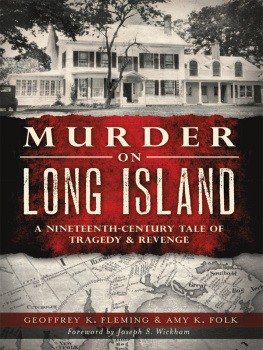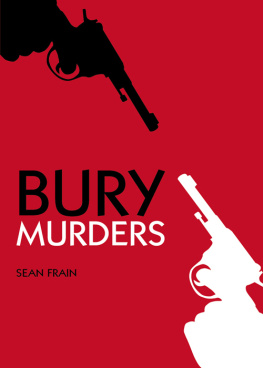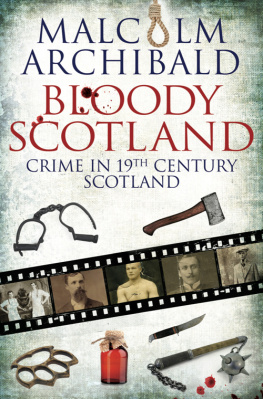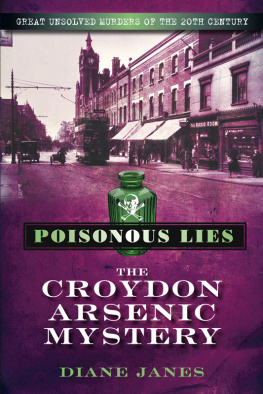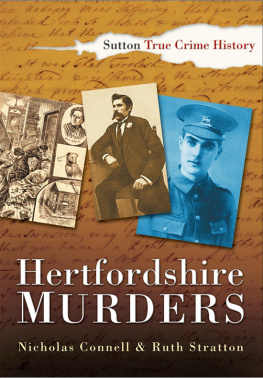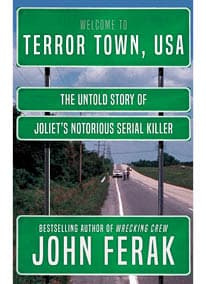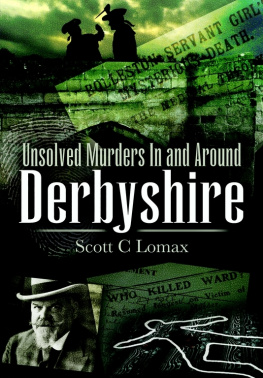T HE A X M URDERS O F S AXTOWN
T HE A X M URDERS O F S AXTOWN
The Unsolved Crime That Terrorized a Town
and Shocked the Nation
N ICHOLAS J. C. P ISTOR

LYONS PRESS
Guilford, Connecticut
An imprint of Globe Pequot Press
Copyright 2014 by Nicholas J. C. Pistor
ALL RIGHTS RESERVED. No part of this book may be reproduced or transmitted in any form by any means, electronic or mechanical, including photocopying and recording, or by any information storage and retrieval system, except as may be expressly permitted in writing from the publisher. Requests for permission should be addressed to Globe Pequot Press, Attn: Rights and Permissions Department, PO Box 480, Guilford, CT 06437.
Lyons Press is an imprint of Globe Pequot Press.
Project Editor: Lauren Brancato
Layout Artist: Maggie Peterson
Library of Congress Cataloging-in-Publication Data is available on file.
ISBN 978-0-7627-8697-8
Printed in the United States of America
E-ISBN 978-1-4930-0416-4
To my mother and father

P REFACE
I had stopped sleeping during the spring of 2003.
A conversation with a Jesuit priest had triggered a childhood nightmare.
Father Francis X. Cleary taught a class on evil and demonic Christianity at Saint Louis University, where I was a student. Cleary was sternto put it mildly. The snow-haired man walked with a cold shuffle that accentuated the white priests collar around his neck and the scowl on his face. When I first met him, he used a cane, which he would rap on the floor or the desks of inattentive students.
He specialized in the mythology of exorcisms. In particular, the exorcism of the young boy who inspired William Peter Blattys book The Exorcist. Clearys Jesuit brothers at the university had performed the ritual on the possessed boy in the late 1940s. (Blatty said he changed the sex of the possessed child from boy to girl out of deference to one of the priests.)
All of that had been turned to legend by the time I walked the statue-lined pathways of the university. Talk of ghosts and evil spirits had supplanted the true story. Folklore said that a room on campus at Verhagen Hall served as the site for the exorcismnear where Cleary once had an office. The kids gather outside on Halloween and look up at the window, Cleary once said. I suppose every school has its ghost stories. Ours just happened to become a best-selling book and movie.
The real exorcism took place in the psychiatric unit at Alexian Brothers Hospital in St. Louis.
Cleary was a young student at the university when the exorcism happened. One day I approached the aged priest, as had so many others, to talk about it. I was nervous. I made sure to watch my words. (Cleary was obsessed with good grammar.)
To my surprise, he was engaging about the whole affair. We spoke about how a fourteen-year-old boy in suburban Washington, DC, had allegedly become possessed by the devil. About how and why he came to St. Louis. About the process Father William Bowdern used to allegedly expel his demons.
Believers and nonbelievers argue over whether it was a case of demonic possession or mental illness. I look at it with a skeptical eye. But the mythology that took hold after the eventof twisting heads, shaking beds, scratching noises, changing voices, flying vomitis frightening.
Some of the Jesuits living with me at Saint Louis University at the time were conversant with some of the events of the case and, as often happens, as the story was passed on, it became more fanciful and inaccurate, Bowdern was said to have written to Blatty.
But Bowdern cautioned, I can assure you of one thing: The case I was involved with was the real thing. I had no doubts about it then, and I have no doubts about it now.
I discussed those details with Cleary. Our conversation turned to my own story. My major. My background. My future. I told him I was interested in becoming a journalist.
He asked me where I had been raised. I told him I was from a small town in Illinois called Millstadt. Surprisingly, Cleary had heard of it. He said there had been a bad murder there more than a century before, and that the event gave way to mythology. I knew immediately that he was talking about the Saxtown murdersthe unsolved killing of a five-person family on an isolated farm. My childhood had been filled with stories about how the German immigrant family had been hacked to death with an ax in the middle of the night.
It had often kept me awake as a boy. I was afraid that someone would storm into our house while we were asleep and kill us all.
Nobody really had the straight story. It had been embellished through the years. The family was said to have netted a gold fortune from Germany and had been killed by someone hoping to steal it. From there, fact had turned to fiction. Locals often repeated fragmented details of the case and then said this person or that person knew the real storyalthough no one ever did. Of course, everyone was sure that the farm where the murders occurred was haunted.
My parents owned a copy of a short, fictionalized account that had been published in the local newspaper by a dentist in 1974 for the centennial of the murders. The story was frustrating because names had been changed and events distorted. It didnt tell you what actually happened. But it was still scary. As a kid I would remove the copy tucked away in a dresser drawer, half in a fright, and look at the red cover with dread. Then I would slowly turn the pages to read the story. A sleepless night almost always followed. I often clung to my covers in bed, lying there with one eye open while hearing noises and fearing shadowseven though nothing was there.
Years later, after having talked to Cleary, my childhood nightmare had been reawakened. I searched online late at night for more information on the Saxtown story. But it was largely fruitless. The case, which had made national headlines for weeks, had been forgotten. Almost like it hadnt really happened at all.
But I couldnt stop thinking about it. I wanted to know the details of the family that was killed. Why someone raised an ax over their heads. Why their murderer was never caught. I wanted to feel the drama. I wanted to be thrown back in that world and learn about my roots. About the Germans who had immigrated to the Midwest in the 1800s.
That story didnt exist in one place. It was scattered in libraries across the country.
So, being an aspiring journalist, I decided to seek out the truth. I walked into the Pius XII Memorial Library and requested microfilm rolls from the newspapers of 1874. I slipped the flimsy celluloid through the machine and turned it on. Now the case seemed alive. There before me blared the headline from the St. Louis Dispatch: Saxtown. The Terrible Scene in the Stillzenreider Farm House.
I made copies of the original newspaper stories and walked home to my apartment to read them. I locked the doors, turned on every lightand stayed up all night.
P ROLOGUE: T HE M URDERED F AMILY
The Saxtown farmers hurried to Freivogel Cemetery to make their stand.
They were older men now. Wrinkled and gray. Their creaky limbs could barely hold steady a pitchfork or a lantern, much less a gun or a knife.
But they were ready for battle. Their aged bodies and fragile memories could not forget what had happened all those years agoand they were still willing to do whatever it took to avenge it.
Under the barren grass beneath their feet in the tree-wrapped graveyard were the wooden coffins they had made in March of 1874. In them were the five bodies of the murdered Stelzriede familythree adults, two children.
Next page

